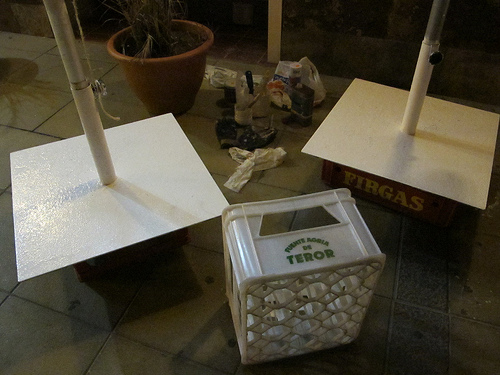painting - Gettysburg Cyclorama

Photograph by Risageron Flickr.
The university sold the painting in 2007 to an anonymous group of Raleigh, North Carolina, investors. The location of the fourth version, originally exhibited in Brooklyn, is unknown. The painting is the work of French artist Paul Dominique Philippoteaux.
The painting is a cyclorama, a type of 360° cylindrical painting. It depicts Pickett s Charge , the failed infantry assault that was the climax of the Battle of Gettysburg.
The painting has been appraised at a value of US$5.5 million, but the value of the sale remains unknown. Coordinates: 39°49′01″N 77°14′01″W / 39.8170°N 77.2336°W / 39.8170; -77.2336 Photos: Civil War and Underground Railroad Museum · National Civil War Museum . Willoughby to commission a second version, which opened in Boston, Massachusetts, on December 22, 1884.
The third version, exhibited in Philadelphia, is known to have been destroyed. The proposed demolition of the old Cyclorama building in Ziegler s Grove has been a source of some controversy among history and architecture buffs, who oppose the destruction of the modernist structure designed by architect Richard Neutra. The original Chicago work went on a tour of eight cities before returning to Chicago in 1933 where it was displayed at the World s Fair. The painting has, for the most part, remained rolled up since 1933, though it was donated by King to Wake Forest University upon his death in 1996.
It opened to the public in 1913, in time for the 50th anniversary of the battle, once again displayed as a full circular painting, rather than in sections. The Battle of Gettysburg, also known as the Gettysburg Cyclorama, is a cyclorama painting by the French artist Paul Philippoteaux depicting Pickett s Charge , the climactic Confederate attack on the Union forces during the Battle of Gettysburg on July 3, 1863.
Other successful works included Taking of Plevna (Turko-Russian War), the Passage of the Balkans, The Belgian Revolution of 1830, Attack in the Park, The Battle of Kars, The Battle of Tel-el-Kebir, and the Derniere Sortie. Philippoteaux enlisted a team of five assistants, including his father until his death, to create the final work. The work opened to the public in Chicago on October 22, 1883, to critical acclaim. The Chicago exhibition was sufficiently successful to prompt businessman Charles L. Among the sites documented in the painting are Cemetery Ridge, the Angle, and the High-water mark of the Confederacy . Philippoteaux became interested in cycloramas and, in collaboration with his father, created The Defence of the Fort d Issy in 1871.
The intended effect is to immerse the viewer in the scene being depicted, often with the addition of foreground models and life-sized replicas to enhance the illusion. The Boston cyclorama was purchased by the National Park Service in 1942, and moved to a site on Ziegler s Grove near the new Visitor s Center in 1961, after a second round of restoration. The exhibition remained open to the public until 2005, when it was closed for a third restoration. The painting restoration was accompanied by the construction of a facility to house the painting, the new Gettysburg Museum and Visitor Center on Hunt Avenue, located away from any areas in which fighting occurred in 1863.
The restored Cyclorama exhibition was reopened to the public in September 2008. The unheated, leaky brick building took a further toll on the condition of the painting.
It was rediscovered in 1965 and purchased by a group of North Carolina investors in 2007 for an undisclosed amount. Until November 2005, the second painting, originally exhibited in the Cyclorama Building in Boston, was on display at the Gettysburg National Military Park.
Four versions were painted, two of which are among the last surviving cycloramas in the United States. The first version of the painting, completed in 1883 and originally exhibited in Chicago, was lost for some time.
